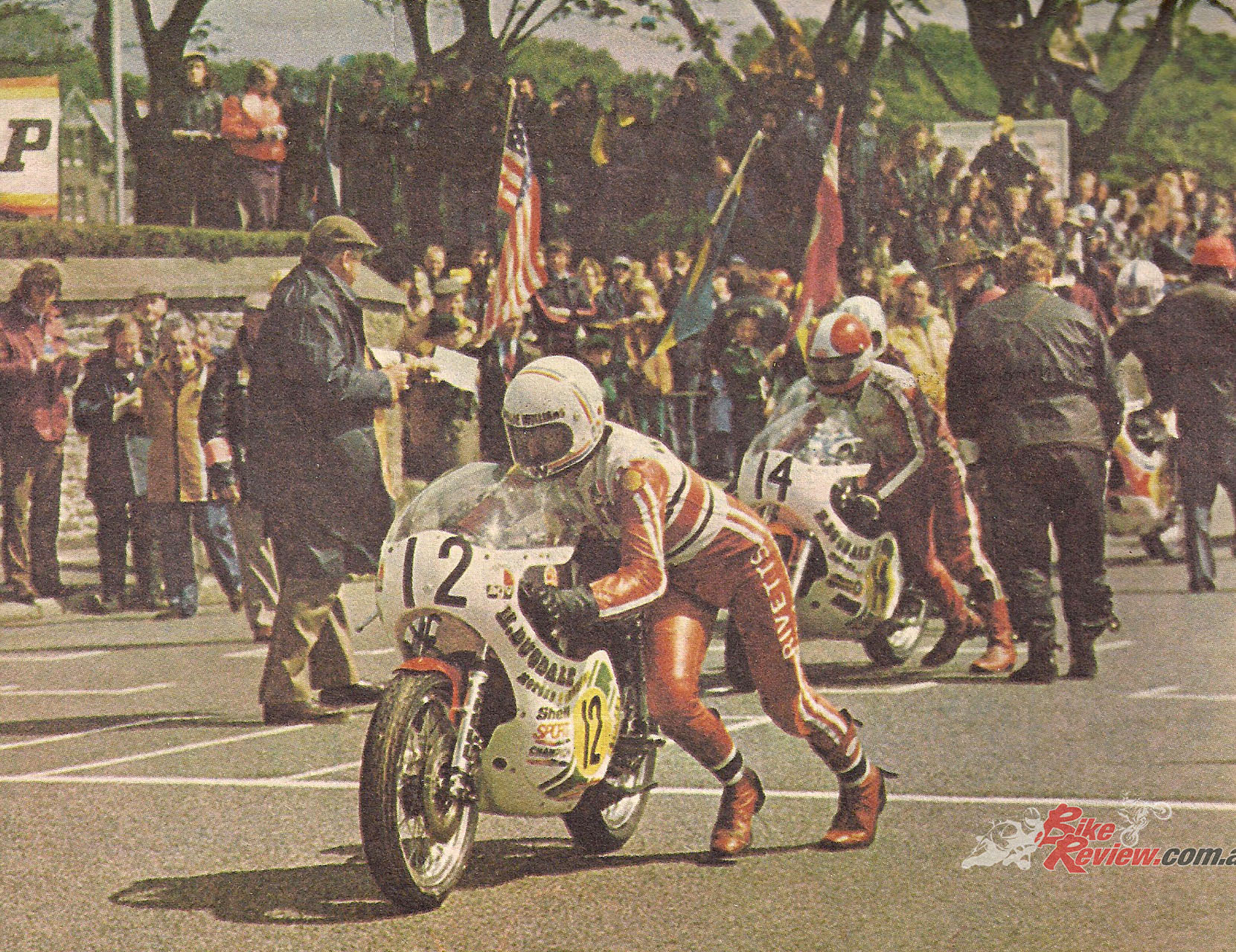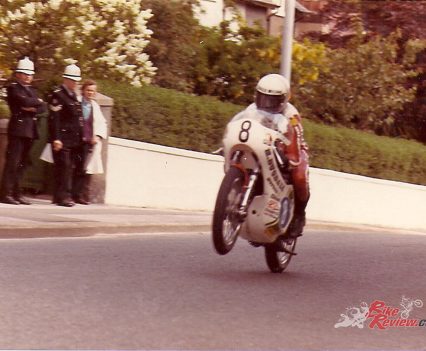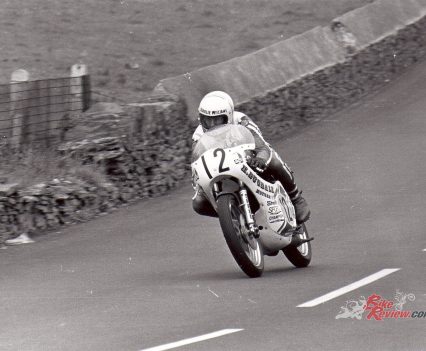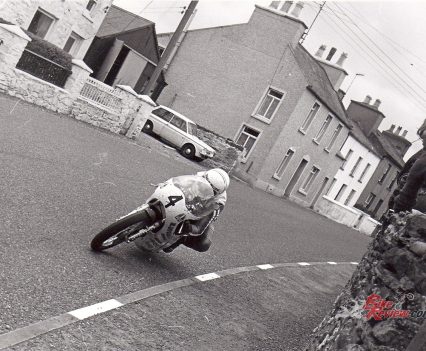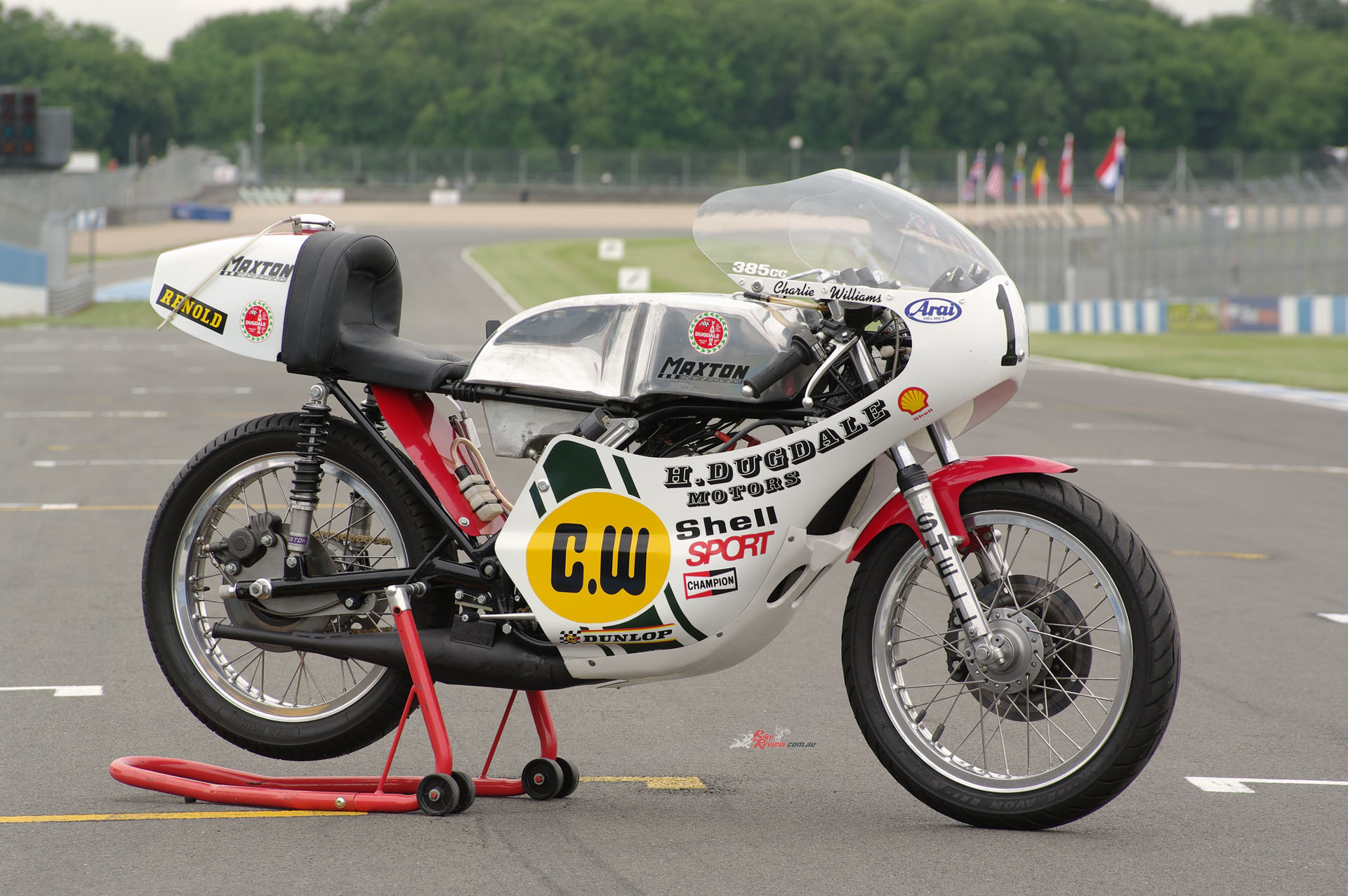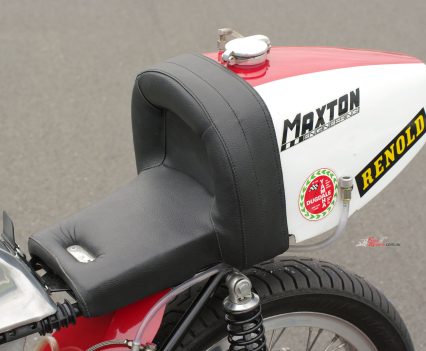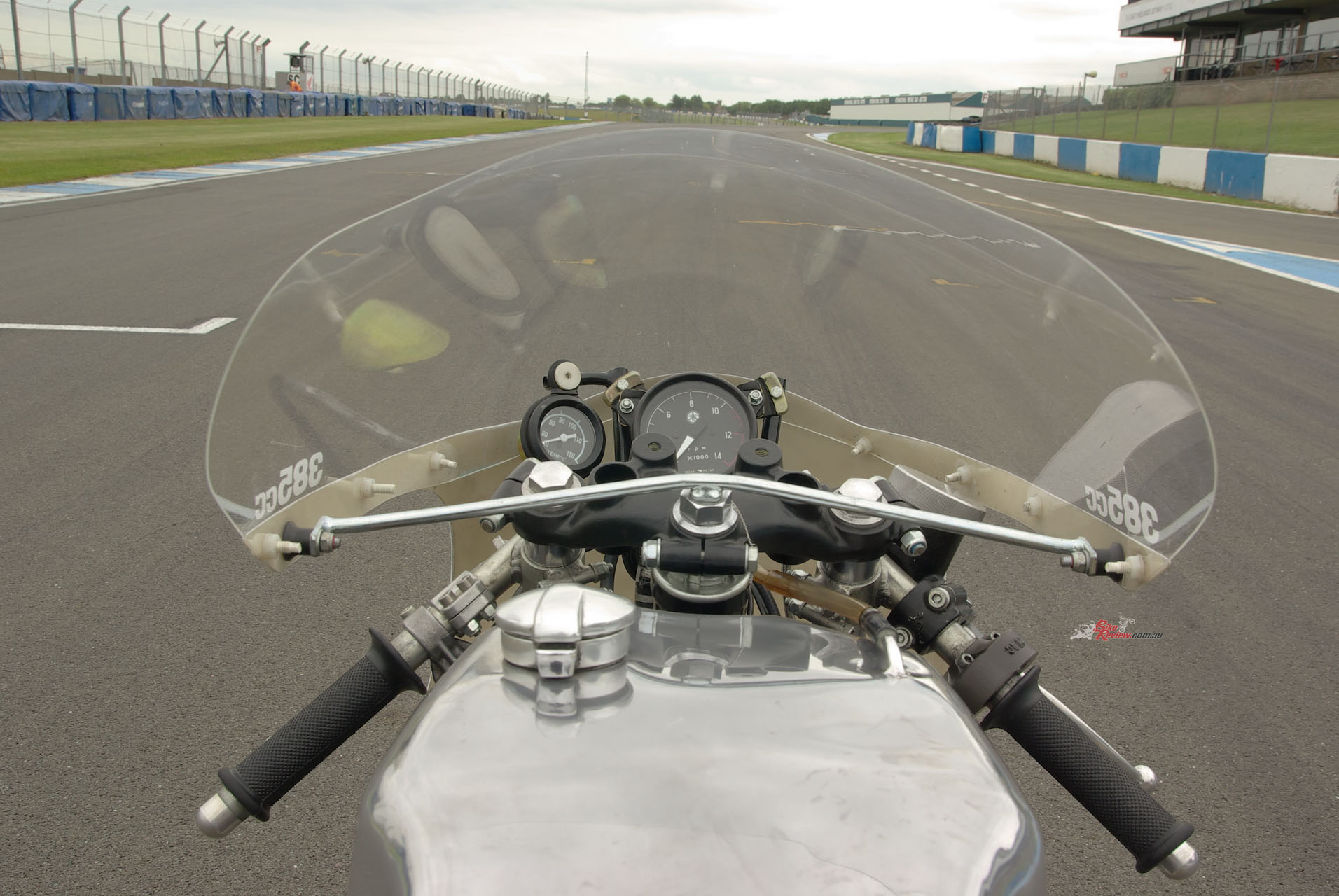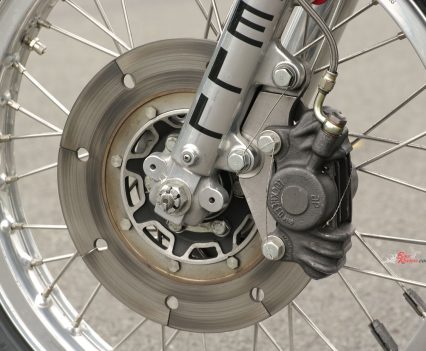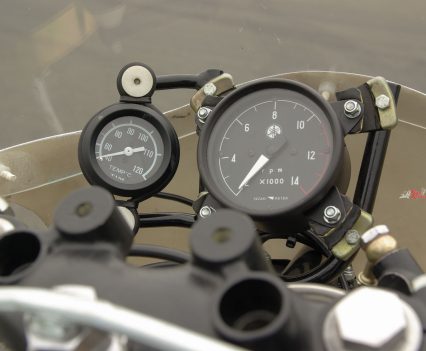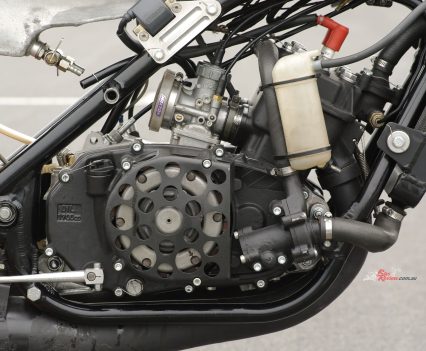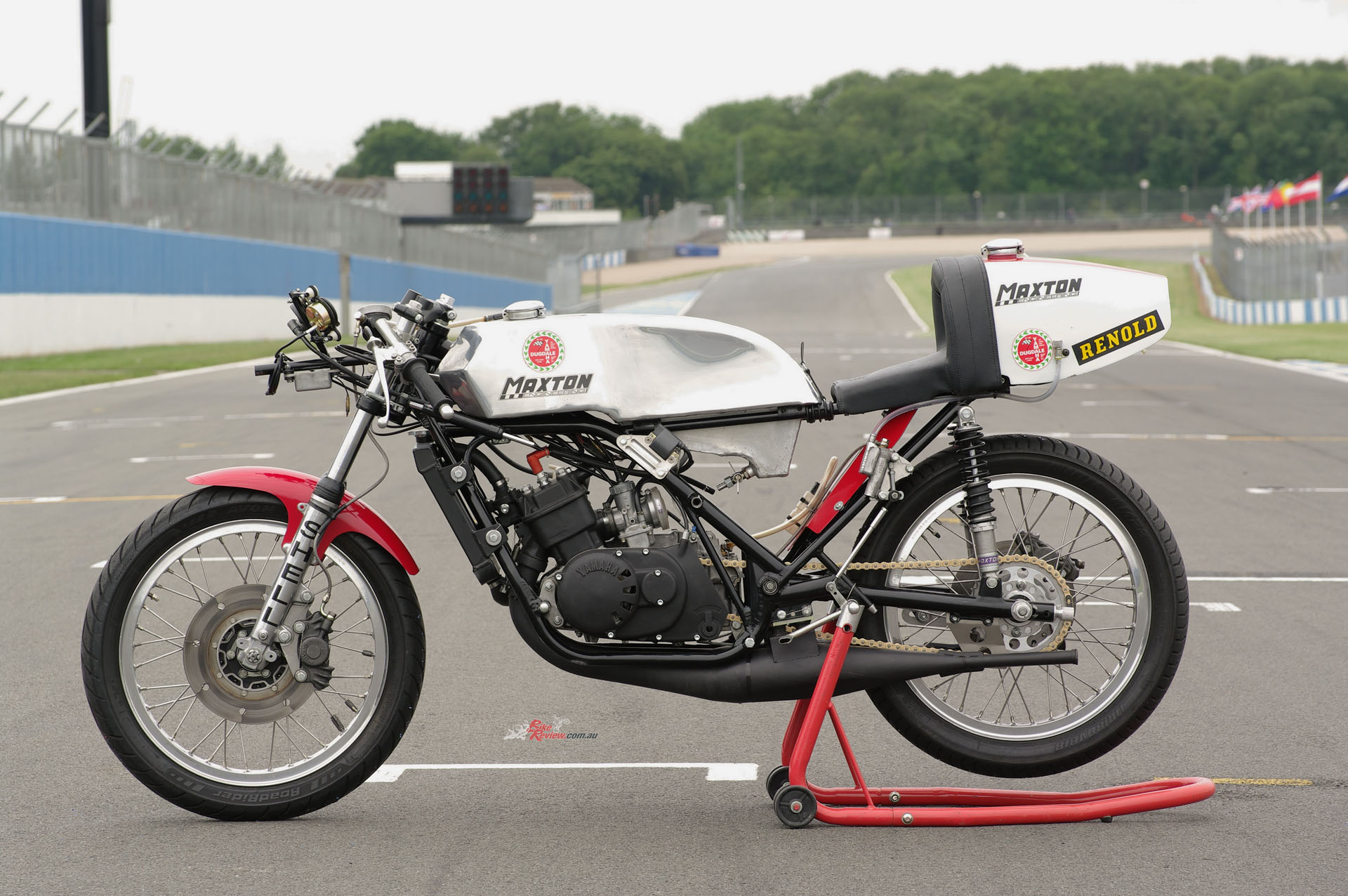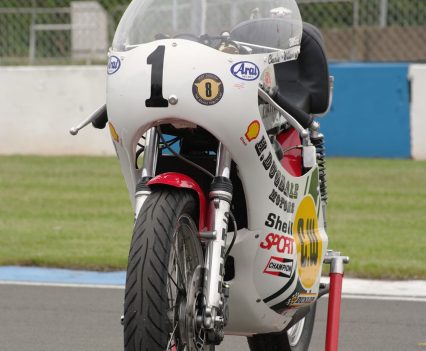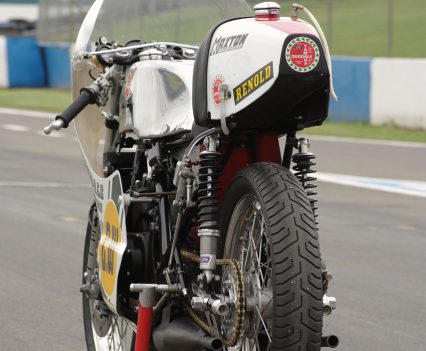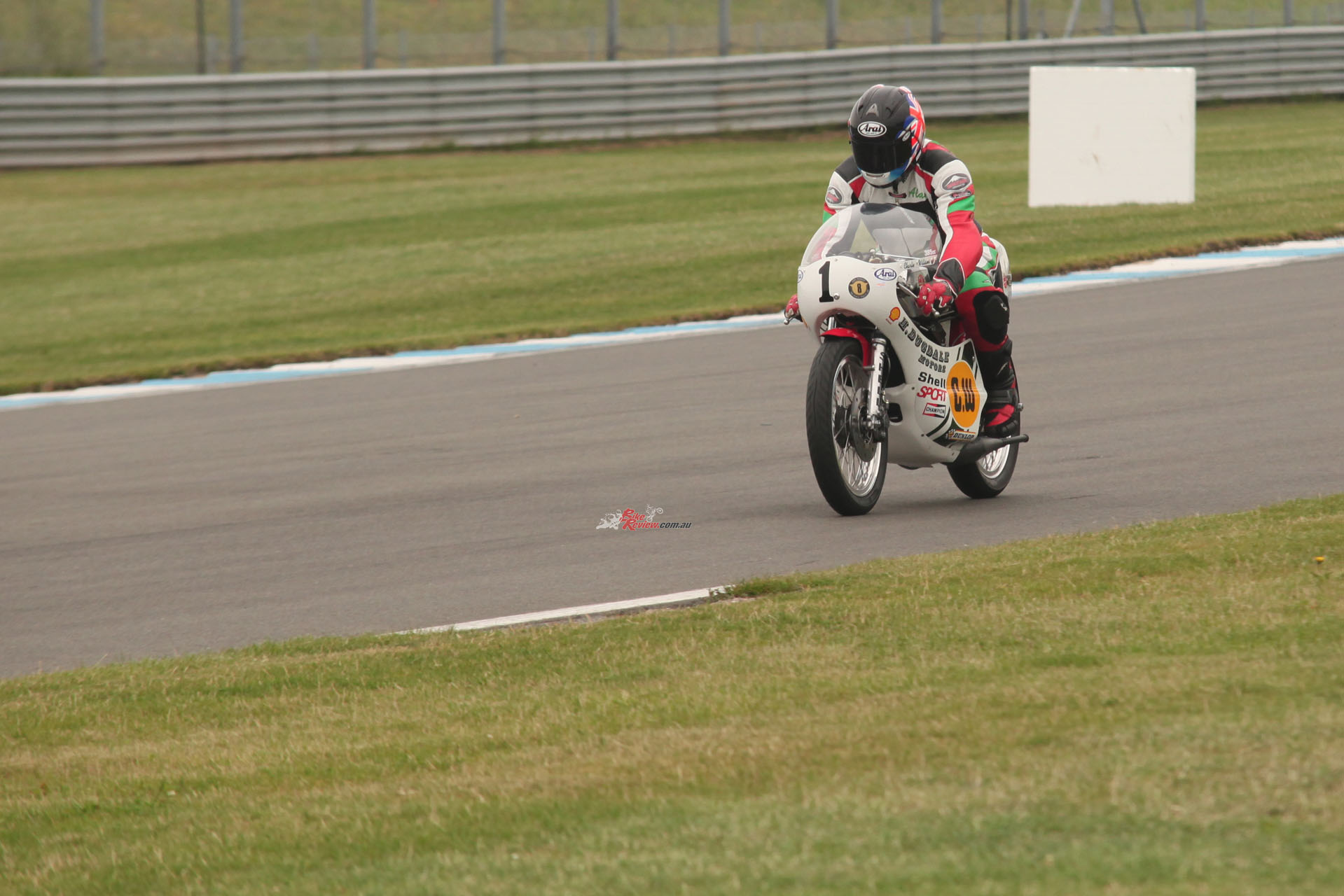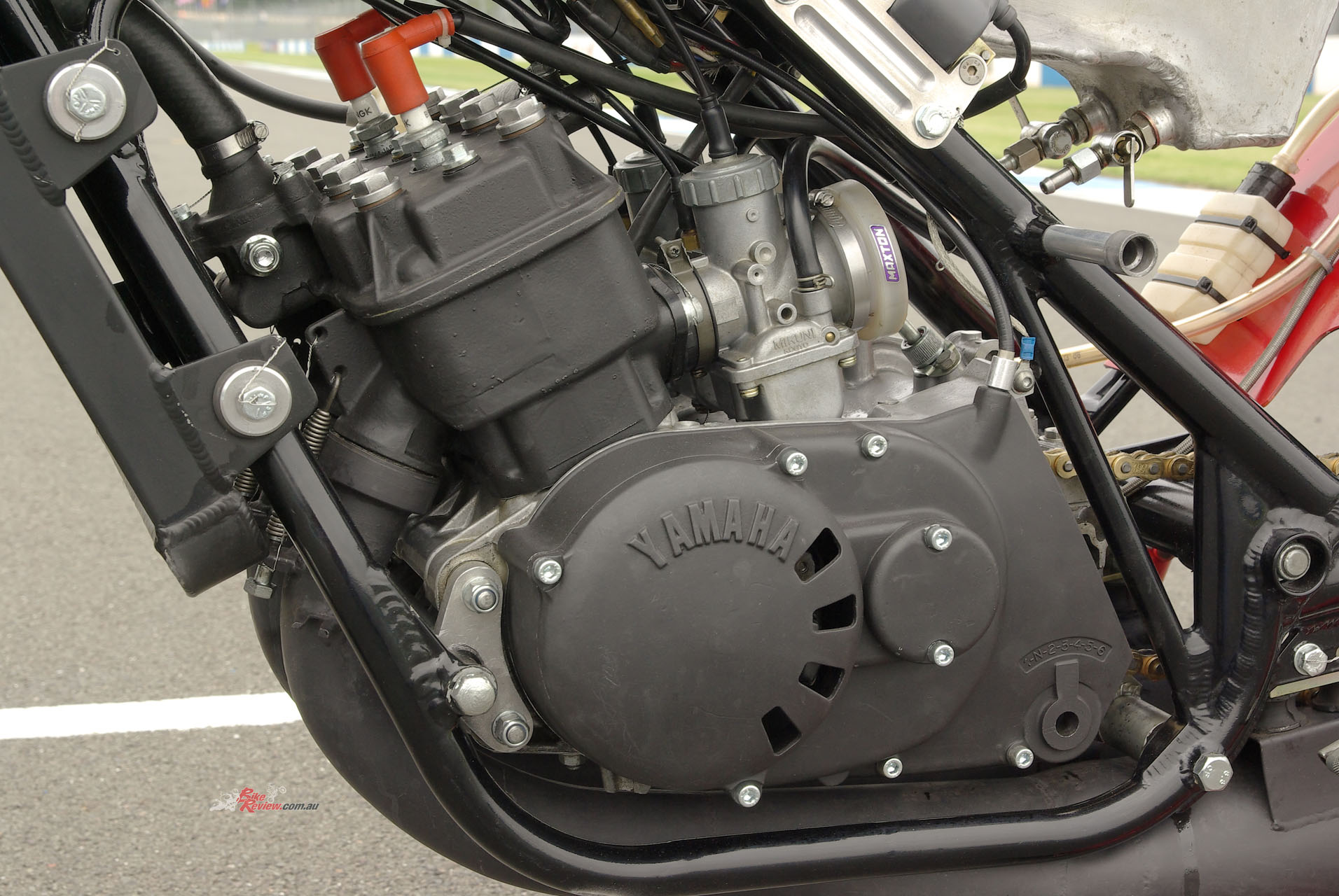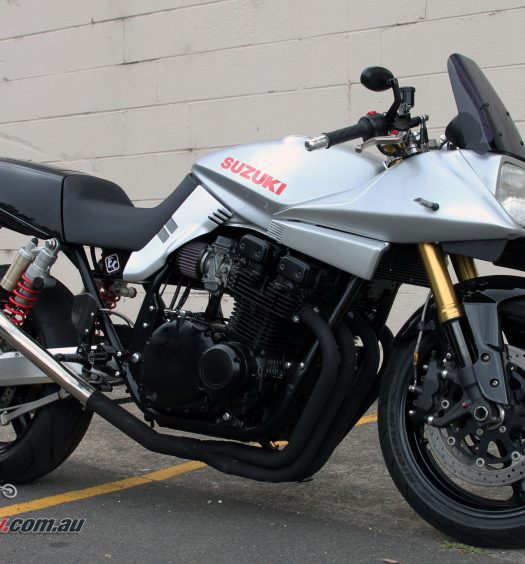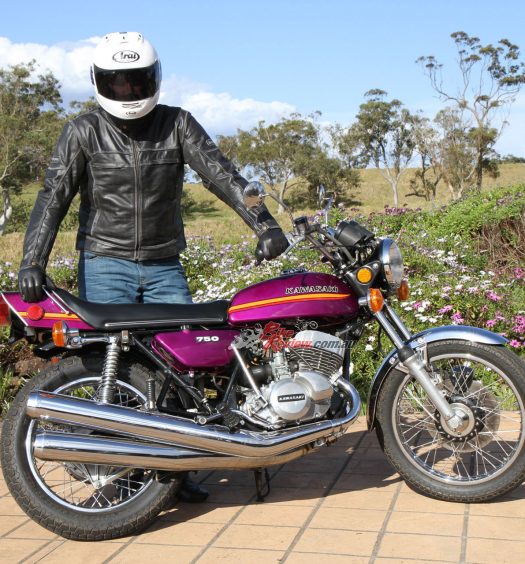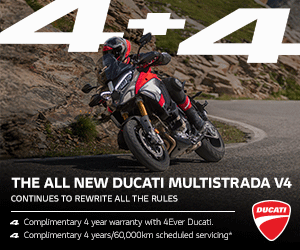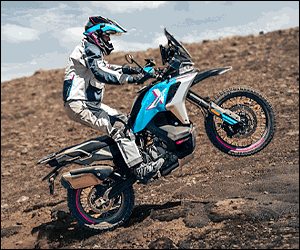Em Roberts built this Maxton Dugdale Yamaha TZ385 replica as a parade bike for Charlie Williams but the race bug soon bit and Charlie was back. Sir Al rides the bike... Photos: Chris de Vine
Back in the days before anyone dreamed Yamaha two-strokes would be venerated as prized collectables, the Dugdale Maxton Yamaha TZ385, that 50 years ago this year took Charlie Williams to a pair of second places in two Isle of Man TT races, was dismantled for parts!

Em Roberts built this near identical replica of the original Charlie Williams ridden 1974 Dugdale Yamaha Maxton TZ385.
The bike also finished tenth place in the 1974 500cc World Championship on the back of that and was fifth place in the Dutch TT three weeks later, but was simply dismantled at the end of that year and its various component parts recycled by Dugdale’s for the ‘75 season.
Read Alan’s other fantastic Throwback Thursday articles here…
“It’s true – we just kept a few bits and pieces from that old bike, like the seat with the fuel tank in it and such, but with the crank a goner after Eddie Roberts’ Manx GP ride on it, there was no interest in rebuilding the engine,” says Charlie Williams today. “We’d certainly have kept the Maxton chassis, but the trouble is that Ron Williams who built it didn’t number his frames, so it’s impossible to know what became of it.
Anyway, the following season, 1975, was when Ron produced his first monoshock frame, which worked so brilliantly straight out of the box that I won the Junior TT on it first time out. So after that we’d probably have sold that old twin-shock frame on to a customer. But when my pal Em Roberts phoned me up almost twenty years ago to tell me he’d found a Maxton frame that was identical to the one we used for the TZ385, even down to the suspension, and asked me what I thought he should do with it, there was really only one answer: build another 385!”
Em Roberts takes up the story. “I was quite excited about doing this, even if originally it was only going to be a demo bike for Charlie to ride in Classic parades. I’d hoped to get it ready for the Centennial TT at Assen in 1998, but just ran out of time. The problem with the original bike was that using the TR2 crankshaft was always a bit of a compromise in terms of vibration, and these weren’t easily available any more, anyway. The main bearings were different than the TZ, and so were the big ends, so I decided to make a new crank with the longer stroke from scratch in heat treatable EN40B nitrided steel, but this time using TZ350 cylinders, pistons, conrods and crank bearings – ball bearings in the middle, and rollers on the outside.
The balancing holes are in a different place to eliminate the vibration, and it’s all worked much better from the very start. I was also able to go down in size from the 24mm big ends on the TR2 to the TZ’s 22mm ones, which meant I could use the 5mm shorter TZ350 conrods with needle rollers at big and little ends, which eliminated the need for any packing plates top and bottom of the cylinders.” But Roberts resisted the temptation to take a file to the standard TZ350 cylinders’ twin-transfer/single exhaust porting – so no boost ports or bridged exhausts, either, although he did make special inserts for the cylinder-heads, after completely machining away the combustion chambers.
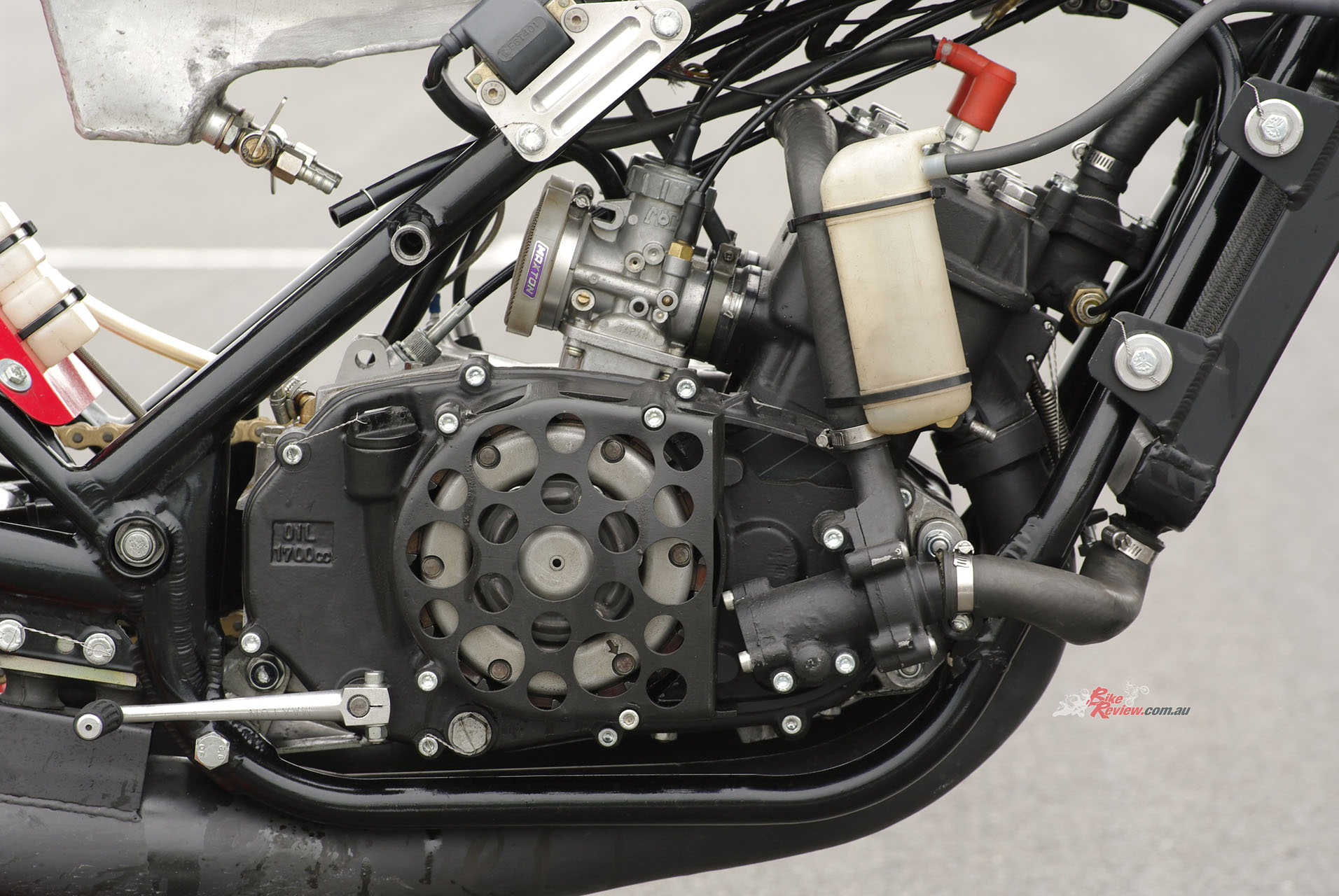
“I was also able to go down in size from the 24mm big ends on the TR2 to the TZ’s 22mm ones, which meant I could use the 5mm shorter TZ350 conrods”…
Having intended only to ever parade the born-again TZ385 that he then built up as an exact external replica of his 1974 bike, with the exception of the missing pair of packing plates, Williams has ridden it in several TT Parades down the years. But Charlie eventually had his arm twisted by ICGP organiser Eric Saul to come and race it in his annual six-race series catering for 1970s 250/350cc two-strokes, recognising that its engine was oversize for authentic reasons.
Riding it in a 2003 support race at his old Endurance hunting ground of the Bol d’Or – by then at Magny-Cours, however, not Paul Ricard – clinched it for Charlie, since when he’s been a regular if occasional member of this modern-day Continental Circus, especially in the races held at what he calls ‘my old stomping ground’, the Bugatti circuit at Le Mans. “I’ve always finished in the top six or seven, and the bike’s never let me down,” he says. “But then Eric started offering a Masters Trophy for the best over 50-year old, and I won it first time out at Le Mans, much to Phil Read’s disgust because I passed him on the last lap to clinch it!”
Charlie continued to appear sporadically in ICGP events on the TZ385 in between racing his Manx Norton in the Classic TT and suchlike, and then in March 2016 he rode it in the first motorcycle race to be held at the Goodwood Members Meeting, catering for 350cc two-strokes. “I promised [the organisers] I wouldn’t finish on the podium on my cheater bike, so I wouldn’t deprive anyone of a trophy!” joked Charlie, after riding to a respectable and non-controversial sixth place in the race on surely the most historic bike on the grid.
The chance to sample the Maxton-framed TZ385 for myself came at a sunny CRMC Donington Park race meeting in one of the Parade events that Charlie Williams kindly insisted I take his place in. I’ve ridden several Classic TZ250/350 Yamahas, but never a Maxton-framed one, and the first impression I got after paddle-starting it easily into life – no wonder Charlie was up with the leaders from the very start of that 1974 Dutch TT – was how much more spacious and accommodating it was than a more miniscule stock Yamaha for my 180cm stature, a tadge taller than Charlie.
Combined with the plush padding of the US-made seat-cum-petrol tank, it would have made the Maxton a good ride for a two-hour TT race, especially in those pre-kneeslider days when you stayed seated on the bike, and didn’t move about to hang off the side in turns. You won’t see many period photos of Charlie Williams doing that, and his economical TT-derived riding style would also have been ideal for the Endurance races in which he later excelled on the works Honda RCB 1000. It also meant that the broken scaphoid he was suffering from during all his 1974 races with the TZ385 wouldn’t have been so much of a handicap, because he wouldn’t have had to put extra weight on his damaged left wrist to lever himself from side to side on the bike.
However, staying seated in the bike means using extra lean angle to keep up speed in turns, hence the Maxton frame’s high-set footrests which I only just managed to lever my toes onto. But that also meant I could tuck away behind the broad screen down Donington’s pit straight, aided by the quite steeply dropped clipons that allow you to get flat on the tank in a straight line – a crucial issue when riding an underpowered twin in the 500cc class against the faster, more potent fours.
All the time you’re riding the Maxton Yamaha you’re aware not only of the great crack from the unsilenced stinger exhausts – silencing only came to GPs in 1976 – but also how smooth the engine is, with none of the vibration I was expecting after reading period race reports containing interviews with Charlie about the bike, in which he complained of this. That was because I hadn’t yet spoken to Em Roberts and learnt about the special crank he took more than 70 hours to painstakingly build for this not-quite-a-replica piston-port two-stroke. All I can say is that he did a good job – this was as vibration-free as you could ever expect a parallel-twin stroke with a 180º crankshaft to ever be.
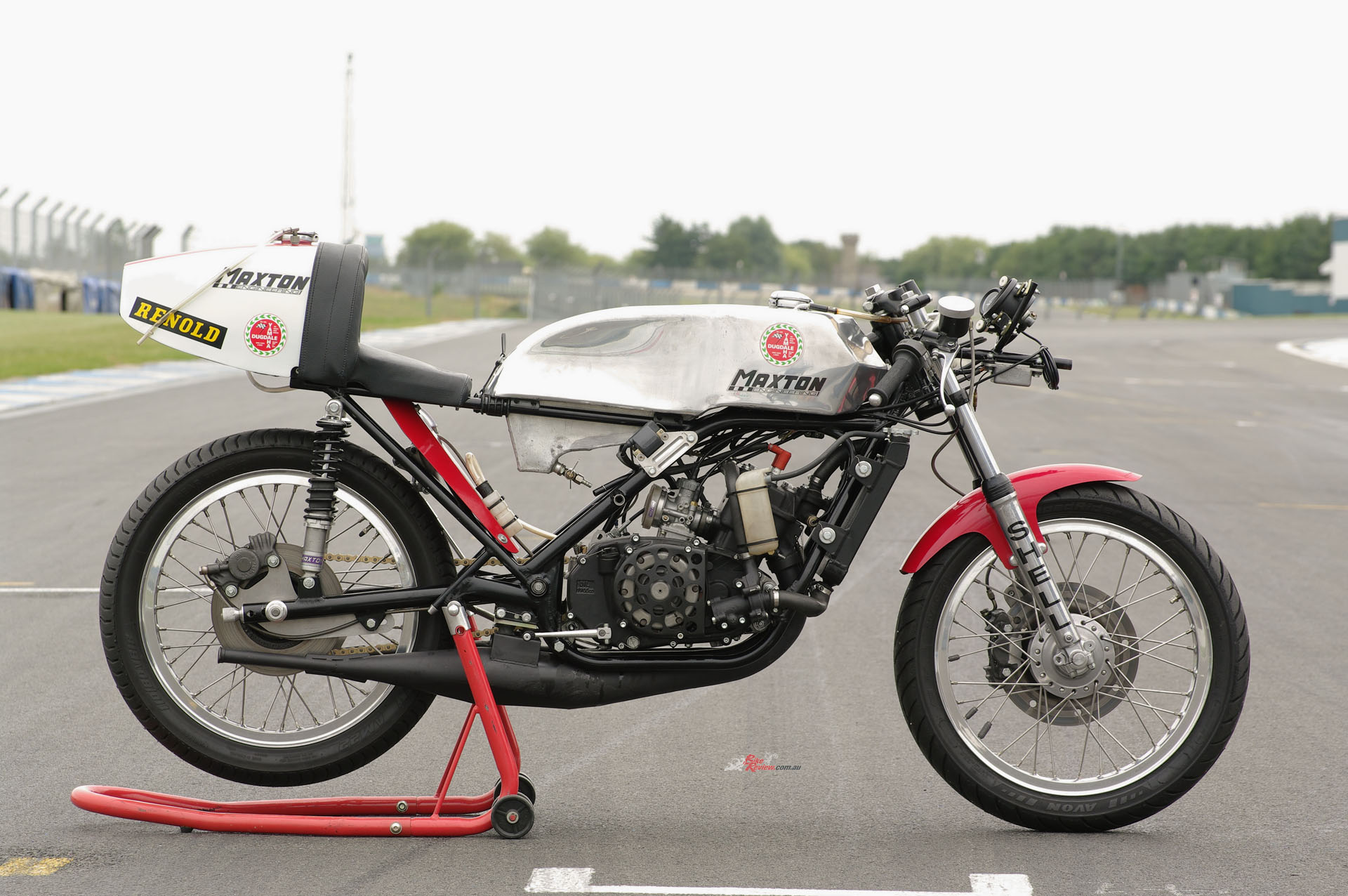
18in wheels, Avon AM22 tyres, YDS-7 forks and Maxton shocks are fitted. Wheelbase is 1450mm, rake 27 degrees.
It was also considerably more torquey than any Yamaha twin I’ve yet ridden, so that while really strong power comes in at around 8,500rpm – enough to lighten the front wheel in second gear exiting the Donington chicane – it’s forgiving enough to pull cleanly away from a tight turn like that one 2,000 revs lower. This would have made it an ideal ride on the TT Course, where in sections like Glen Helen or from Ginger Hall to Ramsey there are several successive second or third-gear corners where you’re constantly backing on and off the throttle, and the same from Parliament Square to the Gooseneck coming out of Ramsey.
“In my case, this was the most flexible friend of a period stroker I’d encountered for a long time”…
You’d be able to let the 385cc motor do its job without encouraging it too often with a dab of the clutch lever, and I’ll bet Charlie saved seconds per lap against his TZ351-mounted rivals exiting Ramsey Hairpin or Governor’s Bridge, thanks to the 385’s superior acceleration and more meaty drive. In my case, this was the most flexible friend of a period stroker I’d encountered for a long time, compensating for my sometimes ham-fisted attempts to choose the right gear for turns like Redgate or McLean’s via the clean-shifting one-up right-foot gearchange. Eventually I got it more or less figured out right – but by then I’d discovered almost inadvertently that there’s more power available up high, beyond the 10,500rpm mark where Charlie told me he usually changes gear.

Alan found the steering sweet, and the ergonomics roomier than a stock TZ, despite the high footpegs for increased cornering clearance.
So if durability isn’t so much an issue – and of course to finish first in a six-lap TT race (or second in CW’s case with this bike!) you must first finish – the 65bhp on tap at 10,500rpm from the TZ385’s motor is held or even exceeded all the way to the 12,000rpm mark, where it finally starts to fall off the pipe. So this would have been an added benefit if Charlie had ridden it more in short-circuit events, with more frequent crank rebuilds on the agenda, in which case its light 119kg half-dry weight, agile handling and torquey nature would have made it hard to beat on tighter British tracks, even in 1976 when the first production RG500s brought four-cylinder performance to privateer customers.
It was a bit of a missed opportunity, because in 1975 – the year after the Dugdale Maxton TZ385 spent its season in the sun – Charlie’s namesake John Williams finished fifth in the 500cc World Championship on his version of the same bike, having obtained a rostrum finish in the Swedish GP (ahead of Bonera’s works MV!) and in the Senior TT, where he emulated CW’s previous year’s effort by finishing – you guessed it – second to Mick Grant’s works Kawasaki.
Because the Maxton frame is really a sweet-steering device, with lots of feedback from the front 18-inch Avon AM22, so that you quickly feel you can really trust the front-end when swooping downhill from side to side through the Craner Curves, or trying to keep up turn speed at McLean’s to compensate for the uphill exit. Yet it steered quite quickly at the Chicane, flicking nicely from side to side to let you access that extra torque for an early drive down to Redgate. The only thing I didn’t care for were the brakes. The single 260mm Yamaha front disc gripped by a two-piston Lockheed caliper juddered quite badly in braking hard for the Chicane or Redgate, so it was probably slightly warped.
Fortunately, the rear brake was an oversize 240mm disc which started out life in a Triumph Herald car before finding its way to the Maxton Yamaha, and with the same twin-pot Lockheed caliper as up front, it did what it needed to do in taking up the slack from its partner. And although Donington doesn’t have any real bumps these days, the Maxton suspension worked well. I’m sure on the TT Course it would come into its own compared to the stock Yamaha setup.
I was genuinely sorry to have to hand the TZ385 back to Charlie again at the end of my ten laps aboard it. This is a very nice motorcycle to ride, and must have been a great one to race. Too bad nobody told Phil Carpenter it was raining that June day back in 1974!
1974 Dugdale Maxton Yamaha TZ385 Specifications
Engine: Water-cooled, parallel-twin cylinder piston port two-stroke with 180º crank, 64 x 60.4mm bore x stroke, 389cc, 2 x 34mm non-powerjet cylindrical-slide Mikuni carburettors, Hitachi CDI ignition, six-speed close-ratio gearbox, dry multi-plate clutch with extra bronze plate and heavy-duty springs.
Chassis: Tubular steel frame, tubular steel swingarm, 34mm Yamaha YDS-7 forks, dual Maxton shocks, 27º rake, 1450mm wheelbase, single 260mm Yamaha fixed front rotor with two-piston Lockheed caliper, single 240mm Triumph Herald rear fixed rotor with two-piston Lockheed caliper, 1.85 x 18in front wheel with 90/90 – 18in Avon AM22 tyre, 2.15 x 18in rear wheel with 100/80 – 18in Avon AM22 tyre.
Performance: 119kg with oil and water, no fuel. 65bhp@11,500rpm, 145mph top speed (Isle of Man TT 1974). Owner: Charlie Williams, Cheshire, UK.





